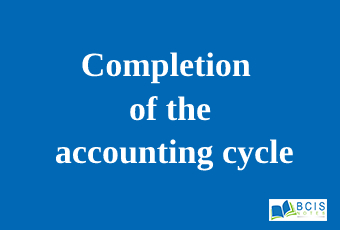
Completion of the accounting cycle
The person maintaining the accounting cycle defines it as a systematic process of recognizing, analyzing, and posting the various events related to accounting in the records of the company. The accounting cycle initiates with the occurrence of the transaction and ends with its recording in the necessary statements of the company. The accountant maintains the records related to the accounting of the company in general ledger and trial balance. It basically reflects the historical events and transaction-related accounts.
Purpose of Accounting Cycle
The main purpose of the completion of the accounting cycle is to record all the transactions systematically without missing an entry. It leads to the accuracy of all financial records. The accountant prepares the financial statements considering accounting records and cycle. So it acts as a stepping stone or base for financial statements.
Steps Involved in the Accounting Cycle
The accounting cycle involves a systematic process which is as follows.
- Transaction
- Journal Entries
- Posting in General Ledger
- Trial Balance
- Worksheets
- Adjusting Entries
- Financial Statements
- Closing the Books
- Transaction
The accounting cycle starts when the transaction takes place. Until and unless you have any transactions, the accounting cycle will not start. It includes all the financial transactions like paying interest or receiving interest, any revenue, or expenses.
Journal Entries
Once the transaction takes place, it is important to record it. So the next step in the accounting cycle is to record the transaction in the journal of the company in sequential order. Debiting and crediting one or more accounts since debit and credit balance should be the same.
Posting in General Ledger
After doing the journal entries of the transaction, the accountant posts entries to individual general ledger where one can summarize all the transactions related to that account.
Trial Balance
At the end of the accounting period, the accountant prepares the trial balance from the journal ledger which helps in calculating the total balance of an individual account.
Worksheets
The rule is that the debit balance should tally with the credit balance. If it does not tally then it is crucial to identify the errors and rectify them to tally the balances. The accountant uses worksheets to execute this.
You may also like the Post-closing trial balance

Leave a Reply